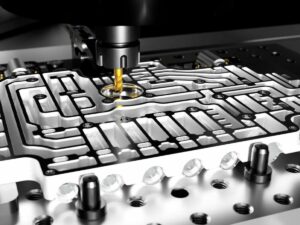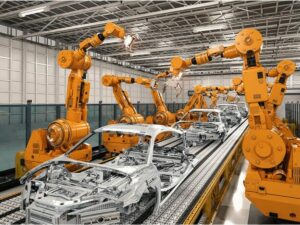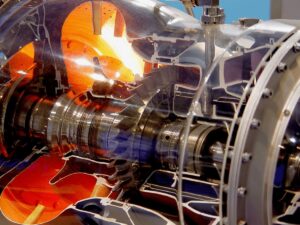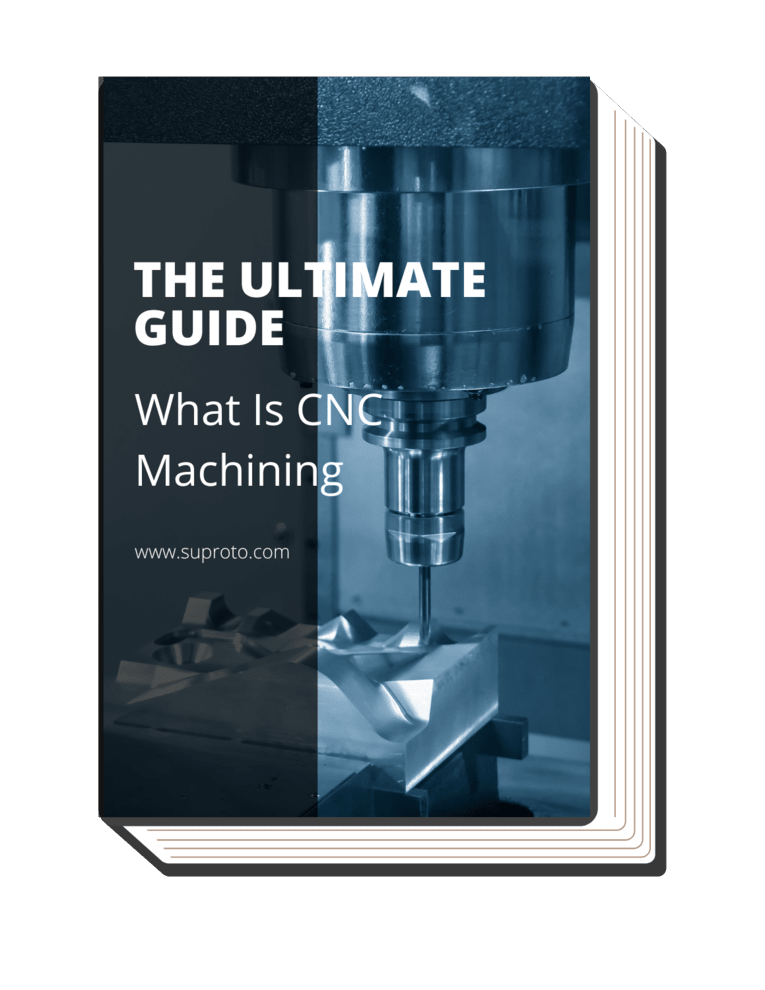Wondering how to navigate the vast world of CNC machining services in China? Are you perplexed about which aspects to consider when selecting a service provider in this manufacturing behemoth? China’s manufacturing sector, particularly its CNC machining services, has witnessed substantial growth, largely driven by the country’s commitment to technology and a focus on producing high-quality products.
As a CNC machine expert, I’ve been part of this journey, and today, I am here to untangle the intricate web of CNC machining services in the country. I’ll guide you through it, helping you understand the nuances of CNC machining in China and how to leverage its benefits optimally.
So, read on to discover this enlightening journey.
1. An Overview of CNC Machining
In the vast ecosystem of manufacturing, CNC (Computer Numerical Control) machining has carved out a unique space for itself. This manufacturing process uses pre-programmed computer software to direct the movement of factory tools and machinery.
China’s embrace of CNC machining has been transformative for its manufacturing sector. More importantly, the Made in China 2025 initiative, focusing on high-value industries like Aerospace, Automotive, Robotics, Electronics, and Pharmaceuticals, indicates the country’s significant strides in advanced processes like digital manufacturing, rapid prototyping, and CNC machining.
In my experience, the move towards CNC machining has not only elevated China’s manufacturing capabilities but also reshaped the global manufacturing landscape. Today, China offers a wide array of CNC machining services, including CNC milling, turning, prototyping, and much more.

2. The Rise of CNC Machining in China
China’s journey towards becoming a global leader in CNC Machining services is a remarkable tale of technology adoption, development, and mastery. Despite its late start in the machine tool industry, China has risen rapidly, marking a significant growth in technology and market size. Here’s a timeline of CNC Machining’s Rise in China:
1980s: Introduction of CNC Machining Technology
China introduced CNC Machining technology to its manufacturing sector. Initially, the adoption was slow and faced several challenges due to lack of expertise and infrastructure.
1990s: Development and Growth
The 90s saw significant development and growth in the Chinese CNC Machining industry. The decade marked the beginning of domestic production of CNC machines, albeit at a lower scale.
2000s: Rapid Expansion
The CNC Machining industry in China experienced a rapid expansion phase during the 2000s, with increased production and export of CNC machines.
2010s: Technological Advancements and Global Recognition
China started producing high-tech, precise, and practical CNC machines, focusing on the development of CNC systems. By the end of this decade, China was globally recognized as a major player in the CNC Machining industry.
2020s: World’s Largest Machine Tool Producer, Marketer and Consumer
By 2020, China became the world’s largest machine tool producer, marketer, and consumer, showcasing high sensitivity to the market with fast responses to sales and services. I truly believe that the rise of CNC machining in China is just the beginning of a much larger narrative, which will continue to shape the future of global manufacturing.
2023: Continuous Development and Innovation
As of today, China’s CNC Machining industry continues to innovate, maintaining its global leadership by catering to a wide array of industries, including automotive, aerospace, and shipbuilding. From my point of view, the journey of China’s CNC Machining industry is an incredible testament to its technological prowess and adaptability.
3. Key Benefits of CNC Machining Services in China
CNC machining services in China have undergone significant advancements since their inception in the late 1970s and early 1980s. As of now, they are recognized globally for their competitive, reliable, and innovative nature, contributing to a wide range of industries. Below, we dive into the key benefits of utilizing CNC machining services in China.
Precision and Accuracy
CNC machining services in China provide unparalleled precision and accuracy. The utilization of computer-aided machines and advanced software allows for intricate designs and minimal wasted material, which means fewer faulty cuts and less material waste.
The meticulousness of this process makes Chinese CNC machining a crucial player in industries requiring highly accurate parts. Having worked in this industry for a few years, I am consistently amazed by the advancements and precision of Chinese CNC machining
Cost-effectiveness
A significant advantage of using Chinese CNC machining services is their cost-effectiveness. According to CNC Shop Chino, China offers lower labor costs and overhead expenses, making it an attractive option for businesses looking to reduce manufacturing costs without sacrificing quality. It’s not just cost-effectiveness but also their relentless push towards innovation that makes them stand out.
High Volume Production
CNC machining services in China have evolved to handle high-volume production with ease. The combination of advanced technology and artificial intelligence, along with big data, cloud computing, and the Internet of Things (IoT), has significantly enhanced CNC machine performance and efficiency. This makes it an ideal choice for businesses requiring large quantities of precision parts in a shorter span.
Material Diversity
Another unique advantage of Chinese CNC machining services is their capacity to work with a diverse range of materials. Whether it’s metal for automotive parts, plastic for medical devices, or other specialized materials, Chinese CNC services can accurately and efficiently manufacture them.
4. Types of CNC Machining Services
CNC (Computer Numeric Controlled) machining services are integral to various industries, providing a fast, repeatable, and precise manufacturing method for a diverse range of materials. Utilizing complex programming and modern machine tools, these services allow for efficient production of parts with complex geometries and tight tolerances.
Here is a table that describes the capabilities and typical materials used for each type of CNC machining service:
| CNC Machining Service |
Capabilities |
Common Materials Used |
| Milling |
Milling uses a rotating tool to cut and remove chips from the workpiece through physical contact. This technology is used for different functions like threading, slotting, and chamfering. It enables the production of complex and intricate designs on a single milling center. The accuracy of CNC milling is unmatched with tolerances as strict as +/- 0.1 mm. |
Metals, plastics, woods, ceramics, etc. |
| Turning |
Turning is a subtractive manufacturing process wherein a workpiece is mounted to a lathe and rotated at high speeds. A cutting tool operates in linear directions and is introduced to the material at precise locations and depths. Turning produces rotational, typically axis-symmetric parts with many features, such as holes, grooves, threads, tapers, diameter steps, and even contoured surfaces. |
Metals, plastics, woods, etc. |
| Drilling |
Drilling involves creating round holes in the workpiece. It is commonly performed using a rotating cutter called a drill bit. |
Metals, plastics, woods, glass, etc. |
| Grinding |
Grinding is a process which utilizes an abrasive wheel to finely finish workpieces and bring them to the desired dimension or surface smoothness. It can provide very high accuracy, and machines used for this process can be either computer controlled or manually operated. |
Metals, ceramics, plastics, etc. |
Note that the materials used can vary significantly depending on the specifics of the project. The ones mentioned here are common materials but not an exhaustive list. As an avid follower of technological advancements in manufacturing, I find it amazing how these CNC machining services have revolutionized the industry.
5. The CNC Manufacturing Process
The CNC manufacturing process involves several steps, often involving highly specialized machinery and computer-controlled operations to produce intricate and accurate parts. Here are the five key steps of the CNC manufacturing process:
Step#1 Designing
Before the CNC machining process can begin, the component that is going to be produced needs to be designed. This is done using Computer-Aided Design (CAD) software, where an engineer or designer specifies the dimensions, features, and overall look of the part.
The design created must be within the capabilities of CNC machining in terms of complexity and size. The digital CAD model is then converted into a CNC program, which will guide the CNC machine throughout the production process.
Step#2 Programming
A program is created using a language called G-code, which is a set of instructions that the machine can understand. This program guides the machine on how to cut and shape the material to achieve the desired output. This program also includes a tool path, which is another set of instructions that direct the machine on how to move the cutting tool to create the required shape.
Step#3 Setup
After the program is written, it’s loaded into the CNC machine. This stage also includes setting up the cutting tool and ensuring that the machine is properly calibrated. Proper setup is crucial to ensure that the machine works accurately and efficiently. Based on my personal encounters, it’s like setting up a new gadget; it’s exciting, and you know the end result is going to be worthwhile.
Step#4 Machining
Once the setup is completed, the actual machining process begins. During this stage, the CNC machine starts cutting and shaping the material based on the G-code instructions. The machine can cut, carve, and form a variety of materials; examples are metals, wood, foam, composites, plastics, and more into precise parts.
This is done autonomously without any human intervention, leading to improved manufacturing speed, efficiency, and precision.
Step#5 Inspection
The final stage in the CNC process is inspection. After the machining process, the resulting component is inspected to ensure that it adheres to the desired specifications and quality standards. From my perspective, any deviations can lead to adjustments in the program or setup to correct the errors and improve the manufacturing process.
6. Application of CNC Machining Services in Various Industries
According to World Edu., The Republic of China leads the world in terms of manufacturing output, with over $2.01 trillion in production, and the country has become a key player in the CNC machining world. CNC Machining services have a broad range of applications across many industries, enabling complex and precision parts manufacturing. Below are the ff:
Automotive Industry
The automotive industry relies heavily on CNC machining for producing a wide variety of parts, from simple components to complex engine parts. The precision, efficiency, and repeatability of CNC machining make it ideal for mass production, ensuring that every part is made to exact specifications.
Additionally, the versatility of CNC machines allows for the use of a wide range of materials, including various types of metals and plastics that are commonly used in automotive parts manufacturing. As an enthusiast myself, I’m always fascinated by the intricate craftsmanship that goes into each automotive part made using CNC machining.

Aerospace Industry
In the aerospace industry, the demand for high precision and complex geometries is paramount. CNC machining fits perfectly into this demand, allowing the creation of parts that are lightweight yet strong, capable of withstanding the harsh conditions of space travel and aviation.
This industry often requires the use of materials that do not lend themselves easily to other manufacturing methods, which makes the flexibility of CNC machining particularly beneficial. Having seen some of these marvels of engineering up close, it’s mind-blowing to think of the precision involved in their creation.

Medical Industry
CNC machining plays a critical role in the medical industry, used in the manufacturing of precision instruments, implants, and equipment parts. The high degree of precision and control offered by CNC machining ensures patient safety and improves overall healthcare delivery.
Furthermore, CNC machining can work with biocompatible materials, making it invaluable for creating surgical instruments and implants. Suproto, the adaptability and precision in this industry truly transforms the production process, making it faster, more precise, and more efficient.

7. 5 Factors To Consider When Choosing a CNC Machining Service in China
China’s robust manufacturing landscape offers a vast array of CNC machining services. Navigating this bustling market requires careful deliberation. Here are some key factors to consider when selecting a CNC machining service in China:
#1 Reputation
Reliable companies will have a proven track record in the industry and positive customer reviews, demonstrating their ability to deliver high-quality work on time. Furthermore, the repetition of purchases by satisfied customers is an excellent endorsement of the service provider’s reliability and quality.
In my personal experience, it is crucial to understand that while reputation is an important consideration, it should never compromise the pricing of the product.
#2 Certification and Standards
Quality assurance and certifications are vital in selecting a CNC machining service. These certifications validate that the service provider adheres to established industry standards, ensuring that the products they produce are reliable and of high quality.
Look for companies that have certifications from recognized international bodies, as these certifications indicate the provider’s commitment to quality and continuous improvement. As a brand that prioritizes quality and innovation, Suproto proudly holds industry certifications, attesting to our unwavering commitment to delivering top-tier CNC machining services.
#3 Capabilities
The capabilities of the CNC machining service provider should match the specific needs. This includes their technological prowess, flexibility, and ability to handle custom requests. A provider’s machinery, ability to work with various materials, and capacity to meet tolerances are significant considerations.
#4 Customer Service
Excellent customer service is a significant aspect of any service provider. A CNC machining service should offer comprehensive support, including technical assistance, training, and after-sales service. Responsiveness to queries, clear communication, and the ability to provide detailed and transparent information are indicators of a company’s commitment to customer satisfaction.
#5 Price
Pricing is a critical consideration in the selection process, as it directly impacts the project’s budget and overall cost-effectiveness. In my experience, finding the right balance between cost and quality is key, and it can often pay off investing in superior services.
For example, a manufacturer that has reportedly outsourced much of its CNC machining needs to Chinese companies due to their competitive pricing, high-quality services, and ability to deliver large quantities within short time frames.
Conclusion
As we conclude this comprehensive guide, let me encourage you to explore these opportunities with an open mind. Remember, the right CNC machining service is not just about affordability; it’s about creating synergies that will drive the business forward.
If you have any further questions or need more information about CNC machining services in China, please don’t hesitate to contact us. We’re here to assist in making informed decisions that will impact the business positively. Together, we can turn these intricate processes into uncomplicated solutions.




